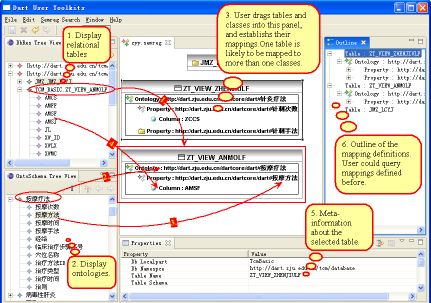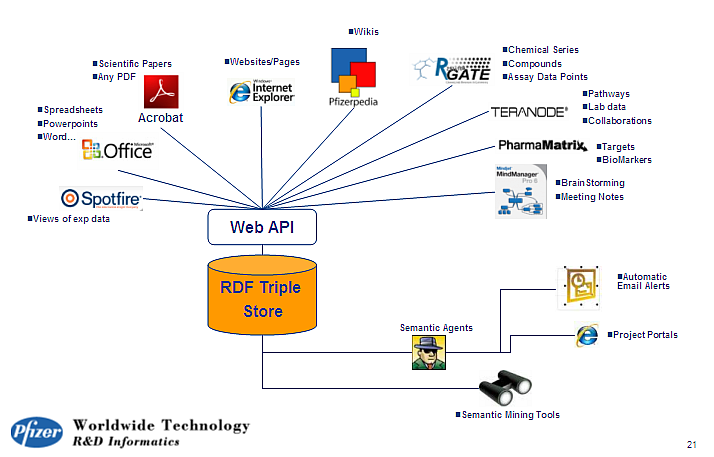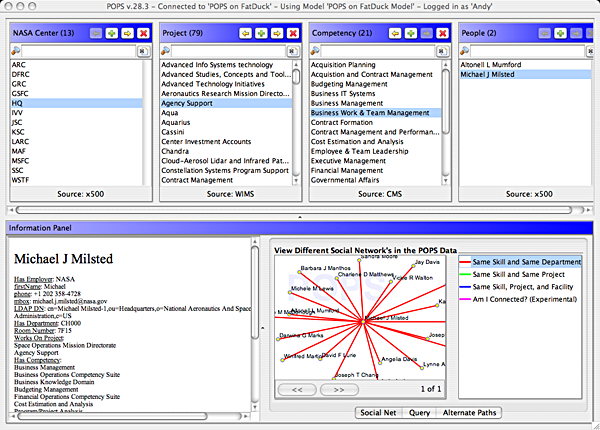 !)
!) :
it is the usual picture of software tools, nothing special any more!
:
it is the usual picture of software tools, nothing special any more!
 . See these statements:
. See these statements:
 !
!Remember the role of SPARQL?


Expertise locator for nearly 20,000 NASA civil servants using RDF integration techniques over 6 or 7 geographically distributed databases, data sources, and web services…

(Courtesy of Clark & Parsia, LLC)

These slides are publicly available on:
http://www.w3.org/2007/Talks/0424-Stavanger-IH/
in XHTML and PDF formats; the XHTML version has active links that you can follow